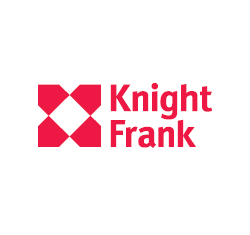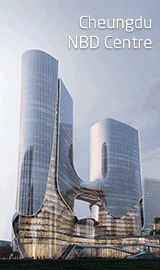Knight Frank’s latest Hong Kong Monthly Report highlights the property market’s performance across different property sectors. Grade A office leasing demand remained stagnant in June due to weak economic conditions.

Unlike Hong Kong Island, where new letting cases dominated the market last month, the Kowloon Grade A office saw a significant slowdown in activity amid the prevailing economic uncertainty. After the withdrawal of cooling measures, the pace of buyers entering the market accelerated significantly in March and April. However, the number of transactions and home prices fell in May and June 2024. Hong Kong’s retail market has continued to experience a downturn, this will be challenging for the rest of the year as there is currently limited market stimulus.
Grade-A Office
Hong Kong Island
Grade A office leasing demand remained stagnant in June due to weak economic conditions. In June, the overall Grade A office rent on Hong Kong Island continued to fall. The overall vacancy rate on Hong Kong Island remained high, exerting considerable pressure on landlords to offer generous incentives to attract tenants.
On the bright side, new letting cases dominated the leasing market in June, with most of the leasing activity in Central. The major take-up sources were primarily from professional and financial companies.
Looking ahead, GFA of approximately 930,000 sq ft of future Grade A office supply, mainly in Central and Causeway Bay, is expected to be completed by 2025. Additionally, new leasing in Hong Kong’s Grade A office market will be driven by upgrades and relocation demand, as more new offices are scheduled for completion.
Kowloon
Unlike Hong Kong Island, where new letting cases dominated the market last month, Kowloon saw a significant slowdown in activity amid the prevailing economic uncertainty and the beginning of the summer holiday period. Renewal cases dominated the market instead of new lettings.
While there was a lack of sizeable new letting cases in June. As occupancy in new buildings has dropped, rents have climbed, and existing landlords are more willing to compromise on rent and incentives during renewals, relocation decisions are getting more difficult in Kowloon.
In addition to financial incentives, some landlords are willing to provide a capex subsidy, such as flexible leasing packages and fit-outs, to attract tenants. The trend has continued, and this demand source is expected to be one of the key supporters of the market in the next couple of months.
Domination of renewal and upgrade-driven relocation cases implies signs of stability, so we expect activity levels and rents in the Kowloon office market to remain relatively stable in the second half of 2024.
Residential
After the withdrawal of cooling measures, the pace of buyers entering the market accelerated significantly in March and April. However, owing to factors such as the delay in interest rate cuts, market uncertainty and the high volume of unsold new units, the number of transactions fell back to about 5,550 in May and slipped a further 30% to 3,856 in June.
Home prices also increased after the withdrawal of cooling measures for two consecutive months in March and April. Home prices fell by 1.2% MoM in May 2024, however, 12.7% lower than the year before. Despite ongoing price cuts from developers, buyers remained cautious amid the continued high interest rates.
In the luxury residential segment, sales momentum demonstrated resilience.Some older secondary luxury stocks have been trading at significant discounts to peak values.
The influx of talent has also bolstered the leasing market, driving the rental index to a four-and-a-half year high, and a MoM increase of 1%. We expect the leasing market to continue to be fuelled by the growing number of non-local students, the influx of professional talent and the return of expats.
Looking ahead, we do not expect residential prices to rebound until the mortgage rate falls to about 3%. Developers also need to destock another 8,000–10,000 units before they can raise prices. This will take at least another six to nine months to achieve.
Retail
Hong Kong’s retail market has continued to experience a downturn, with total retail sales value declining by 11.5% YoY to HK$30.5 billion in May 2024.
The retail leasing market trend for food and beverage outlets in the first half of 2024 is mixed. On the one hand, the trend of store closures was visible. On the other hand, some restaurant brands, particularly from the Chinese mainland, expanded rapidly into Hong Kong, only to find that their turnover was insufficient to overcome the high rents.
On a positive note, Chinese Mainland EV brands are actively expanding into Hong Kong’s retail market, focusing particularly on showroom space in highly visible sites in areas such as Wan Chai and Kowloon Bay. Notably, some motor operators are also renting short-term exhibition space in shopping malls to test market sentiment without committing to long-term leases. EV brands continue to seek entry or expansion into the Hong Kong market, which will support and benefit the retail leasing market. Looking ahead, retail sales will require an 8–10% growth in 2H 2024 compared to the same period in 2023 to match last year’s total retail value of HK$407 billion. This will be challenging as there is currently limited market stimulus.
Download the report here.











